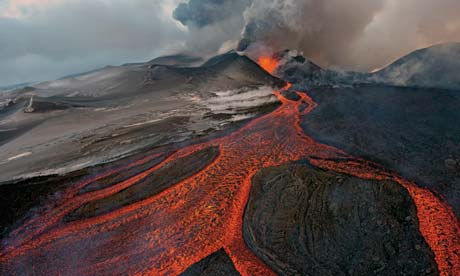
In the latest Wanderlust magazine we feature an incredible photograph of Plosky Tolbachik volcano erupting in Kamchatka, Russia. Here's the story behind the photo
The stunning image was taken by Sergey Gorshkov and was his winning entry into the Wildlife Photographer of the Year competition, within the Wildscapes category. Here he tells us how he got the shot…
Capturing a volcano eruption as close as you seem to be is impressive – how did it happen?
I took pictures of wildlife in Kamchatka for seven years, over this time I managed to shoot many interesting things. But I didn’t happen to see volcano eruption and I made a promise to myself to come back to Kamchatka if ever a volcano eruption started. On 29 November, 2012 I got a phone call – Plosky Tolbachik volcano was erupting. I quit all my business in Moscow and immediately set off to Kamchatka to shoot the eruption.
How can you get to this part of the volcano?
You can get to Plosky Tolbachik form Petropavlovsk by helicopter only. But in the winter it is very cold in Kamchatka (minus 40 Celsius) and there is frequently non-flying weather. I had to wait for good weather, rented a helicopter and started the flight to the volcano.
What was it like to stand there so close to the eruption?
The first thing I saw from the helicopter was the clouds of smoke covering the sky, I couldn’t see the crater because of this smoke. The evaporation of lava streams was so strong that it was nearly impossible to take pictures. From time to time strong wind blew the clouds away from the crater making it possible to see the eruption clearly. I could see a 200-meter lava fountain flying up out of the crater, falling lava flowed out of the crater forming delta. Lava streams move quickly sweeping away everything on their way. In several days lava streams went down for more than 10km.
While going down lava streams got frozen but only on top and standing on it you could feel that there was a moving process inside. After flying around I decided to stay for a night near the volcano. We put up the tents 300m from the crater. It was minus 32 C. In addition to low temperatures there was strong wind of 30-40 meters per second, which easily blew a tripod with camera away several times.
What were the main problems you faced?
Low temperatures and strong wind make the photographing process a real challenge. Your fingers freeze. In that case warm clothes approved on Wrangel Island helped a lot. The noise from the eruption was so loud that it was impossible to talk. It reminded me of gun volleys.
But the most interesting started in the evening. It was my luck that strong wind blew smoke and steam away from the crater. At twilight, the boiling lava beautifully spewed out of the dark crater against the background of dark-blue sky. The colours were so deep and saturated that it seemed to happen somewhere on Mars.
Watching this I thought that nothing could stop nature, humans are powerless here. At nearly 1am the ground started to shake and a new strong explosion began. That continued till 3am. The crater contour was hidden in smoke, ash and steam. There was only an unclear red spot and lava river which carried huge lumps, these were fragments of the crater which burst into parts. We stood silently. Everyone understood that if the lava bombs flew into us, no one would run away. I tried to shoot that. But there was poor visibility because of ash and smoke, though it was quite bright during the eruption.
The wind at night was so strong that I had to strengthen the tent all the time. When the wind stopped, the fall of ash began. Huge ash flakes were falling down, like a heavy rain. And that caused real problems to the photographing process. Ash got everywhere in the lens and matrix. Another problem was smoke, I was afraid I'd suffocate in the smoke. Flying in a helicopter above the lava I felt the heat coming through the open door. Intensive evaporation worsened the work of self-focusing; I had to use manual focus. The red colour of eruptions was also a problem – it was difficult to show the real process of eruption.
What do you especially like about this picture you managed to get?
I have been to many places and I have seen many things but Plosky Tolbachik volcano eruption has deeply impressed me. I will never forget lava rivers and 200-meter lava fountains.
How do you hope viewers of the photo react?
A good photo always arouses positive emotions. Looking at this photo I come back to Kamchatka in my mind and it reminds me of the explosion and heat from the boiling lava. I want the viewers to feel the atmosphere of the volcano eruption and experience the same feelings which I did.
Sergey’s photograph, along with the other winners and finalists of Wildlife Photographer of the Year, are now on display at the Natural History Museum www.nhm.ac.uk. For more of Sergey’s work see www.gorshkov-photo.com.